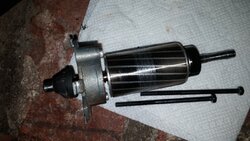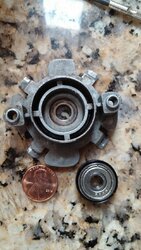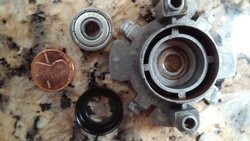I have a Jamestown J1000 insert. The convection motor, which is a dual crossflow, has been nothing but a nightmare. The current issue it is having is it will run for hours with no issue, putting out good air flow. Then, all of a sudden, it will come grinding to a halt. After disassembly, I see the rotor is actually scored around the center. How could this occur after hours of operation? And how could the center be scored? Does it bulge out when it gets hot? When I put it back together with fan blades, it spins nice and free, and it will run fine again (for a while) so I don't think the bearings are shot. Could it be a balancing issue? Could the rotor be too large for the stator? I'm not sure what my options are other than a new fan purchase. I do have new bearings on order.
This is the motor/fan:
http://jamestownpelletstoves.com/wp-content/uploads/2013/10/07EEH-Crossflow-Fan-for-J11.jpg
Any input is greatly appreciated.
This is the motor/fan:
http://jamestownpelletstoves.com/wp-content/uploads/2013/10/07EEH-Crossflow-Fan-for-J11.jpg
Any input is greatly appreciated.




